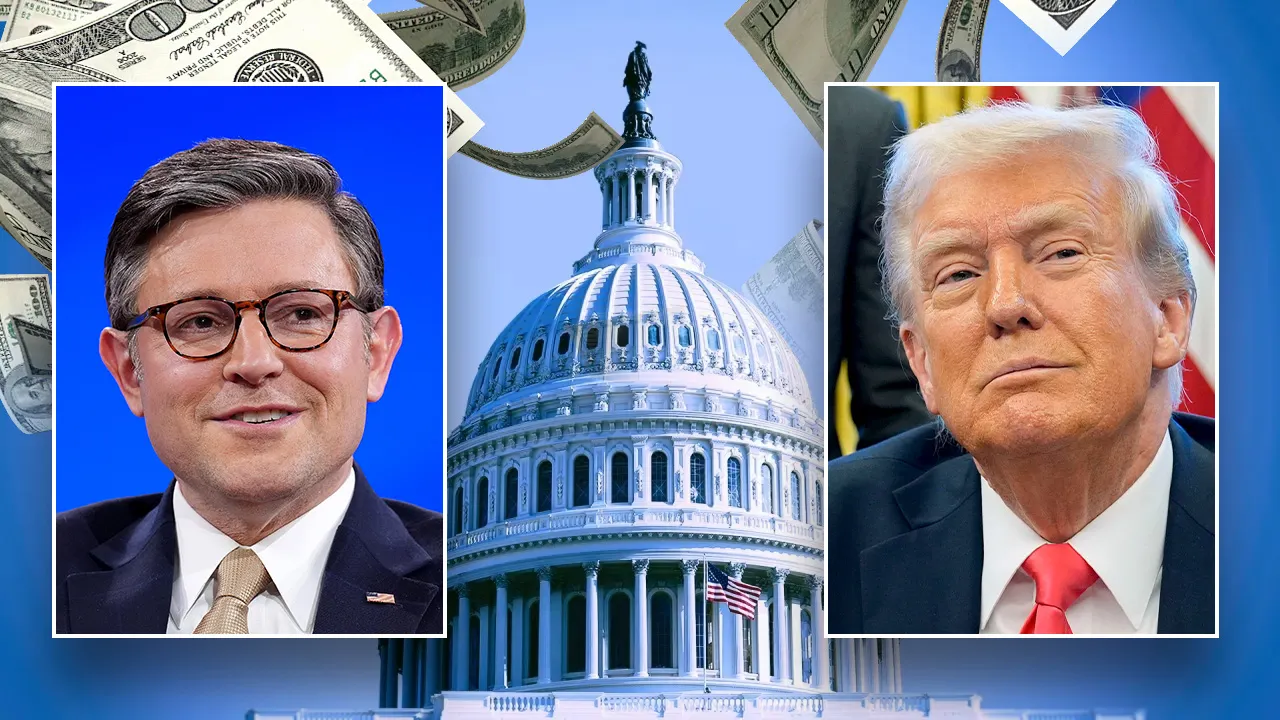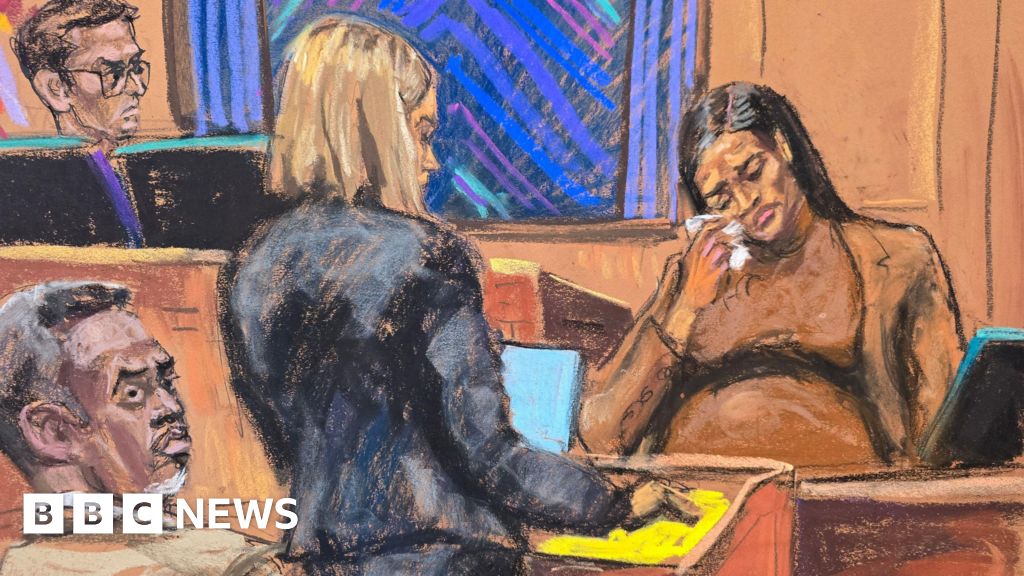World
Kessler Says DOJ Critiques of House Settlement Are Off Base

The Justice Department’s statement of interest criticizing the NCAA’s preliminarily approved settlement to resolve the House, Carter and Hubbard antitrust litigations is off the mark, attorney Jeffrey Kessler told Sportico in a phone interview on Saturday.
The DOJ’s court filing was made in a California federal district court late Friday. Among other critiques, the DOJ objects to colleges paying athletes 22% of a defined formula for averaged shared revenue. The DOJ finds this arrangement inadequate because the “cap” has not been collectively bargained with a union (there is no union for college athletes since they are not employees and unions consist only of employees).
The cap, the DOJ highlights, means D-1 schools won’t be able to compete for college athletes by offering them “additional value beyond that limit for use of their [NIL].” The DOJ finds it problematic that an NCAA member school “is not permitted to spend what it wants … to compete for the services of college athletes.” While the new amount (around $21 million a year for a school’s athletes) is dramatically greater than the old amount ($0), it is “still fixed by agreement” among competing businesses. Price fixing by competitors is generally disfavored under antitrust law.
The DOJ is also worried that the NCAA and power conferences can use the settlement, which is set to last 10 years, as a defense in future antitrust cases. As the DOJ sees it, the NCAA might “attempt to use a private, negotiated settlement as a shield in future litigation.” To corroborate that concern, the DOJ references an email from NCAA and power conferences attorney Rakesh Kilaru sent to DOJ attorneys in which Kilaru noted his clients “retain all rights” to rely on the settlement.
Kessler, a partner at Winston & Strawn and a lead attorney in several historic sports litigations, stressed the settlement, if granted final approval by U.S. District Judge Claudia Wilken following a hearing on April 7, will lead to college players being paid “billions of dollars.” He also underscored the settlement will change longstanding NCAA rules that have denied players any compensation.
A settlement is also just that—a settlement—meaning it reflects the give-and-take of a deal. Both sides, including the NCAA, need to find the prospect of settling better than continuing to litigate. The players and the NCAA (and power conferences) could have kept litigating and rolled the dice. They would have also had to accept spending many years in court since federal appeals in antitrust cases can last a long time. They instead opted to cut a deal. Wilken is not charged with determining if the settlement is ideal or optimal for the players. She must assess if it satisfies a lower bar: The settlement must be fair, reasonable and adequate for class members and adequately resolve the alleged antitrust problems.
As to the possibility of the settlement being used as a defense, Kessler emphasized “there is no release of antitrust claims,” either by the Justice Department—which is not a party to the litigation—or future players.
If elite athletes who are currently 12 years old wish to challenge NCAA rules on antitrust grounds in five years, the athletes can do so. The settlement doesn’t release future claims. The two sides expect the 12-year-olds won’t bring a lawsuit and will instead accept the compensation figures that have been set in the House settlement, but if the 12-year-olds want to sue, they can.
The NCAA can use the settlement as a legal defense, but a defense is only as persuasive as found by a court. A defense is not an antitrust immunity or exemption. It’s also not as if the House settlement has dissuaded the filing of antitrust lawsuits. Since Wilken granted preliminary approval last October, Vanderbilt QB Diego Pavia has challenged NCAA eligibility restrictions on JUCO transfers on antitrust grounds and Southern Mississippi basketball player John Wade III has challenged the NCAA’s five-year eligibility period on antitrust grounds.
The timing of the DOJ’s filing is important for at least a few reasons.
First, the filing was made with less than three days to go before President-elect Donald Trump is sworn in as the 47th president of the United States. Trump, his nominee for U.S. attorney general, Pam Bondi, and incoming attorneys for the DOJ’s antitrust division might not agree with the DOJ’s position as expressed in Friday’s statement and could withdraw or amend the statement.
Trump’s DOJ, including its antitrust division, will also take months to fill out. The U.S. Senate must confirm Trump’s nominee for the assistant AG of the antitrust division (Gail Slater) and positions in that department will gradually be filled. Time is of the essence: Wilken is set to decide on final approval after a hearing 11 weeks from now. Trump’s DOJ might not be ready to express a viewpoint by then. This could create an uncertain landscape for Wilken to know the DOJ’s position, which could make the DOJ’s filing on Friday seem less authoritative.
Second, the timing of the DOJ’s statement could deflate its legal arguments. The DOJ could have raised these same points last year, including before Wilken granted preliminary approval in October, but waited until the final hours of the Biden administration. Those points were also already raised by seven former and current D-I athletes in their court filing last October, which might have been a better time for the DOJ to weigh in. Rushing to file the statement before Trump takes office could be interpreted as the DOJ, under the leadership of President Joe Biden and Attorney General Merrick Garland, believing Trump and Bondi hold different views.
Lastly, it’s telling that while the DOJ opines the House settlement doesn’t do enough for college athletes because of underlying antitrust concerns, the DOJ hasn’t sued the NCAA over those concerns. The DOJ, while under the leadership of Democratic and Republican presidents, could have challenged these rules at various points over the last 70 years. In fairness to the current DOJ, it did join a lawsuit (Ohio v. NCAA) last year over NCAA transfer rules. And in 1998, the DOJ sued the NCAA under the Americans with Disabilities Act over treatment of college athletes with learning disabilities. But the DOJ could have, and didn’t, challenge numerous other NCAA rules in recent decades as the same college athletes at “big time” programs generated massive revenues for their schools and weren’t paid.

World
Top US Senate Democrat to block Trump DOJ nominees over Qatar airplane

World
Self-proclaimed 'king of Germany' arrested in plot to overthrow government
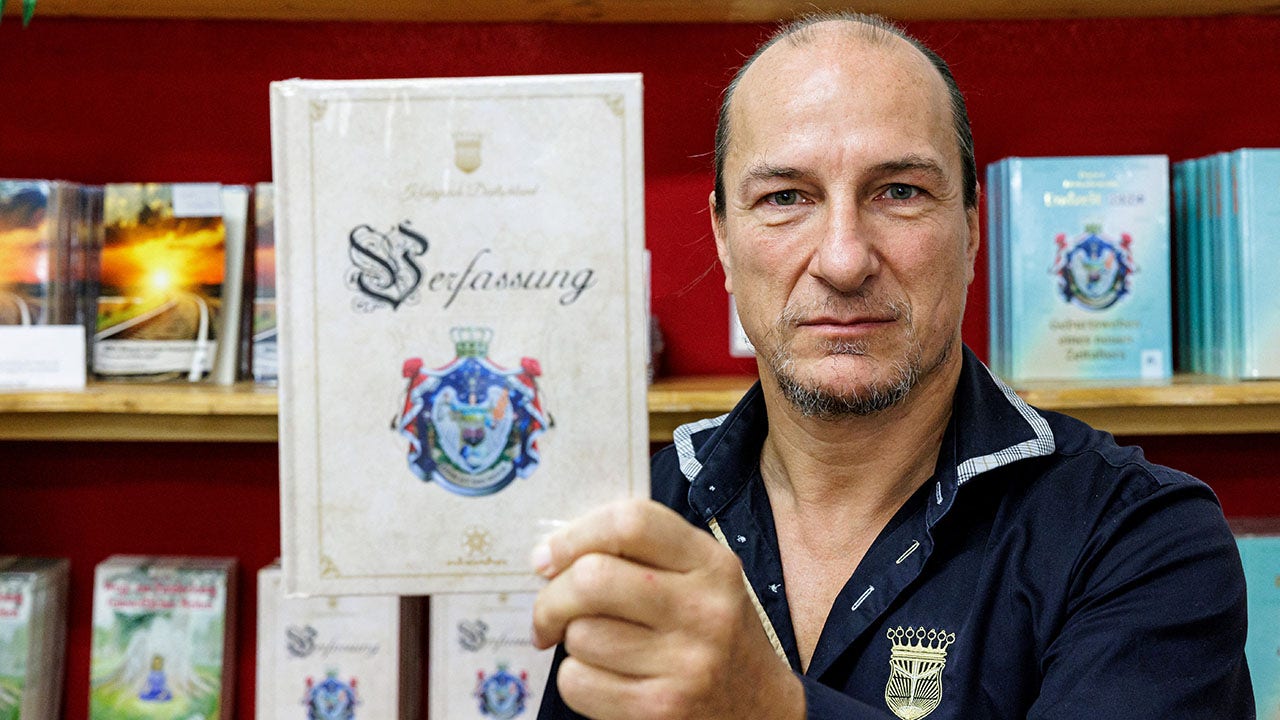
The self-styled “king” of Germany and three of his senior “subjects” were arrested for attempting to overthrow the state, according to media reports.
Peter Fitzek, 59, was taken into police custody during morning raids conducted Tuesday in seven German states, the BBC reported.
Fitzek’s group, the Reichsbürger, or “citizens of the Reich,” has also been banned by the government.
TRUMP CELEBRATES CONSERVATIVE PARTY WIN IN GERMANY
Peter Fitzek, the self-proclaimed head of the so-called “Kingdom of Germany,” poses for a photo with the kingdom’s constitution in Wittenberg, Germany, Oct. 23, 2023. (Jens Schlueter/AFP via Getty Images)
The group’s aim is to establish the Königreich Deutschland, or “Kingdom of Germany.”
“I have no interest in being part of this fascist and satanic system,” Fitzek previously told the news outlet in a 2022 interview.
Reichsbürgers reportedly have their own currency, flag and identification cards and want to set up separate banking and health systems.
The Reichsbürger undermined “the rule of law,” said Alexander Dobrindt, Germany’s interior minister, by creating an alternative state and spreading “antisemitic conspiracy narratives to back up their supposed claim to authority,” the news report states.
GERMANY’S NEW LEADER LOOKS TO DISTANCE EUROPE FROM TRUMP

Peter Fitzek, the self-proclaimed head of the so-called “Kingdom of Germany,” shows the paper currency he created himself in Wittenberg, Germany, Oct. 23, 2023. (Jens Schlueter/AFP)
He said the group finances itself through crime.
Fitzek, who claims to have thousands of “subjects,” denied having violent intentions but also called Germany “destructive and sick.”
In 2022, dozens of people associated with the Reichsbürger were arrested for plotting to overthrow the German government in Berlin. They were accused of planning a violent coup, which included kidnapping the health minister in an effort to create “civil war conditions” to bring down German democracy, according to the BBC.

Self-made identity and banking documents of the so-called “Kingdom of Germany” are pictured in Wittenberg, Germany, Oct. 23, 2023. (Jens Schlueter/AFP via Getty Images)
Once dismissed as eccentric by critics, the group is now seen within Germany as a serious threat as the far right has grown politically over the past decade, the report said.
World
Costa calls for reforms in Bosnia to ensure EU membership progress
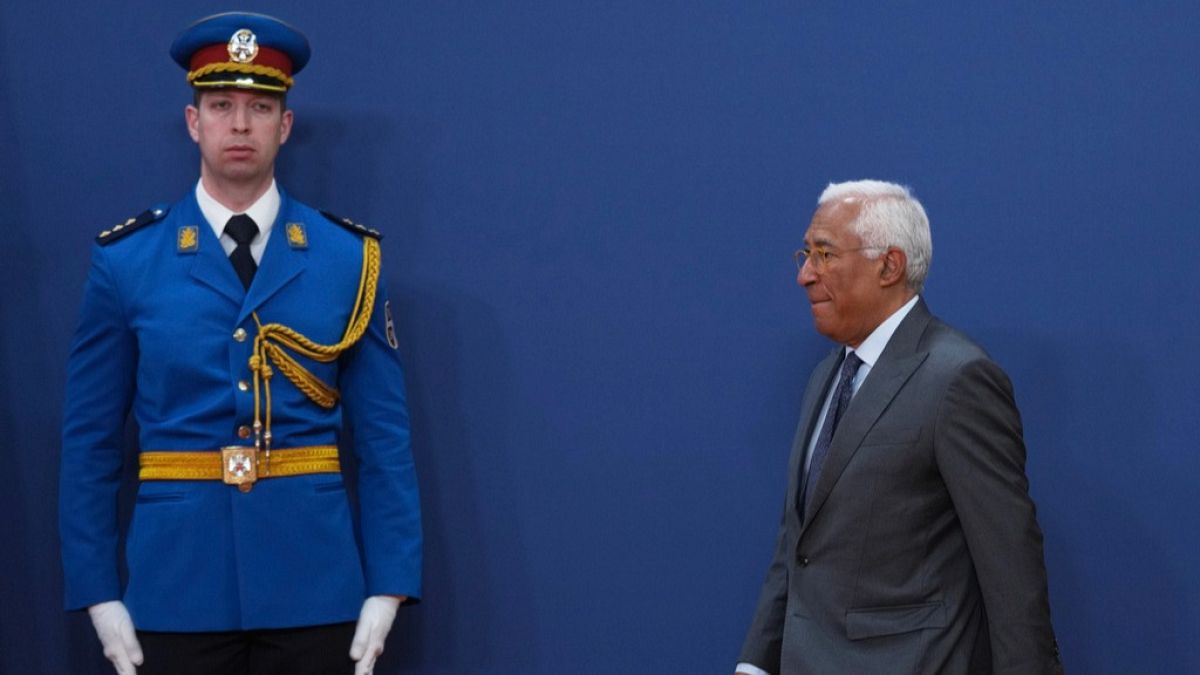
After his trip to Belgrade, European Council President António Costa visited Sarajevo on Tuesday as part of his Balkans tour. He was given a warm reception upon his arrival before meeting with Bosnia’s presidency.
In a statement, the European Council chief announced that the EU “remains committed” to the country’s European future. He also praised Željka Cvijanović, Denis Bećirović, and Željko Komšić — members of the Western Balkan country’s three-way presidency — for their role in maintaining stability and security in the country and the region.
Recently, tensions have been brewing domestically over the leader of the entity of the Republika Srpska (RS), Milorad Dodik’s actions, which the state-level authorities denounced for undermining the country’s constitutional order.
Western powers and the EU have condemned Dodik for his provocations after he had suggested that the Dayton Agreement, the peace agreement that formally ended the Bosnian War in 1995, had outlived its purpose.
In his statement, Costa underlined the importance of the Dayton accords, set to mark its 30th anniversary this year.
“And this year, on the 30th anniversary of Srebrenica genocide and the Dayton (and) Paris Agreement, I believe that it is an important message to remember,” said Costa.
Costa also outlined that some reforms are needed to ensure Bosnia remains on the path to EU membership.
“We need the approval of two judiciary laws, the appointment of a chief negotiator, and the adoption of the reform agenda to move towards on the Bosnia and Herzegovina in the European path.”
Bosnia is the only country that does not benefit from the EU’s Growth Plan for the Western Balkans. Costa stressed that implementing these reforms is of paramount importance to ensure that Bosnia’s citizens benefit from the EU plan.
“I would like to see Bosnia and Herzegovina joining the other Western Balkans partners in profiting from all that the European Union has to offer,” the Council president noted.
Costa will next travel to Montenegro and Albania on Wednesday, for meetings with President Jakub Milatović in Podgorica and President Bajram Begaj in Tirana. He’ll conclude his tour with a visit to Skopje in North Macedonia, where he will meet Prime Minister Hristijan Mickoski.
Additional sources • AP
-

 Austin, TX4 days ago
Austin, TX4 days agoBest Austin Salads – 15 Food Places For Good Greens!
-

 Education1 week ago
Education1 week agoIn Alabama Commencement Speech, Trump Mixes In the Political
-

 Technology1 week ago
Technology1 week agoBe careful what you read about an Elden Ring movie
-

 Culture1 week ago
Culture1 week agoPulitzer Prizes 2025: A Guide to the Winning Books and Finalists
-

 World6 days ago
World6 days agoThe Take: Can India and Pakistan avoid a fourth war over Kashmir?
-

 Education1 week ago
Education1 week agoUniversity of Michigan President, Santa Ono, Set to Lead University of Florida
-

 Technology6 days ago
Technology6 days agoNetflix is removing Black Mirror: Bandersnatch
-
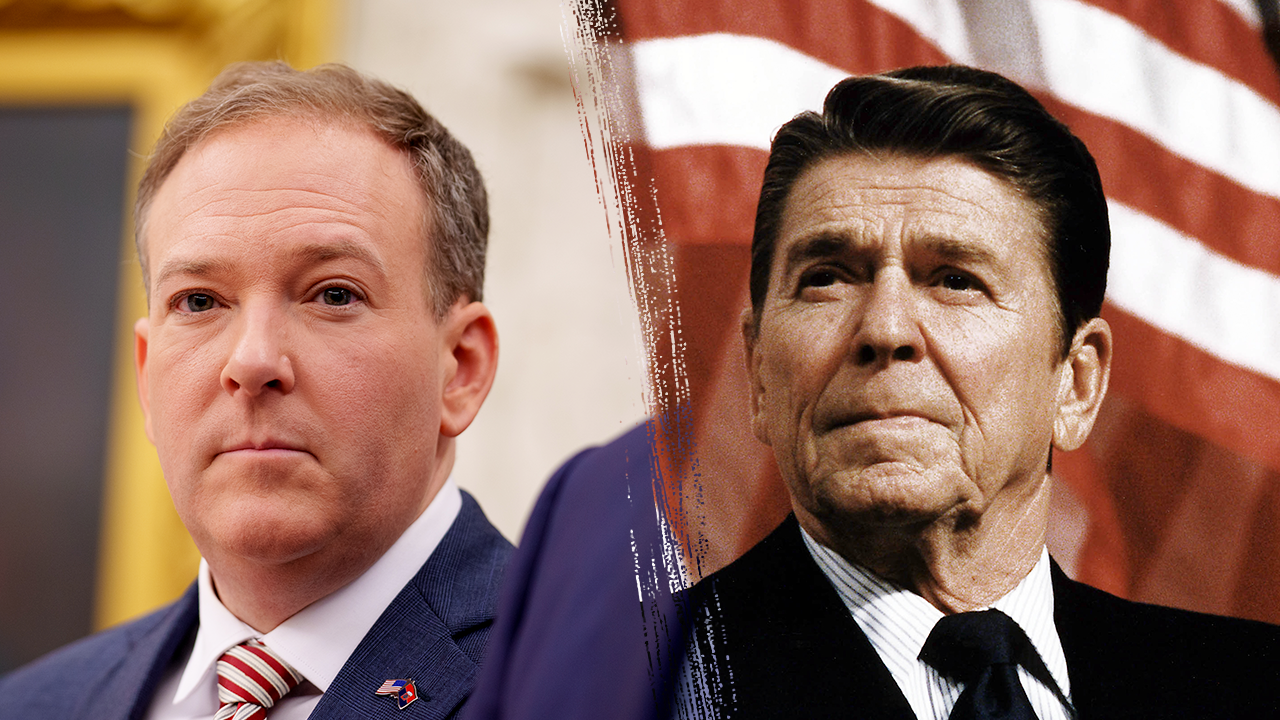
 Politics1 week ago
Politics1 week agoEPA chief Zeldin announces overhauls to bring agency back to Reagan-level staffing

















